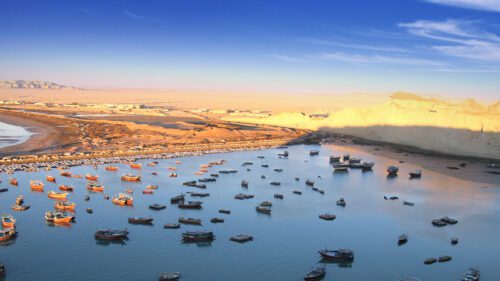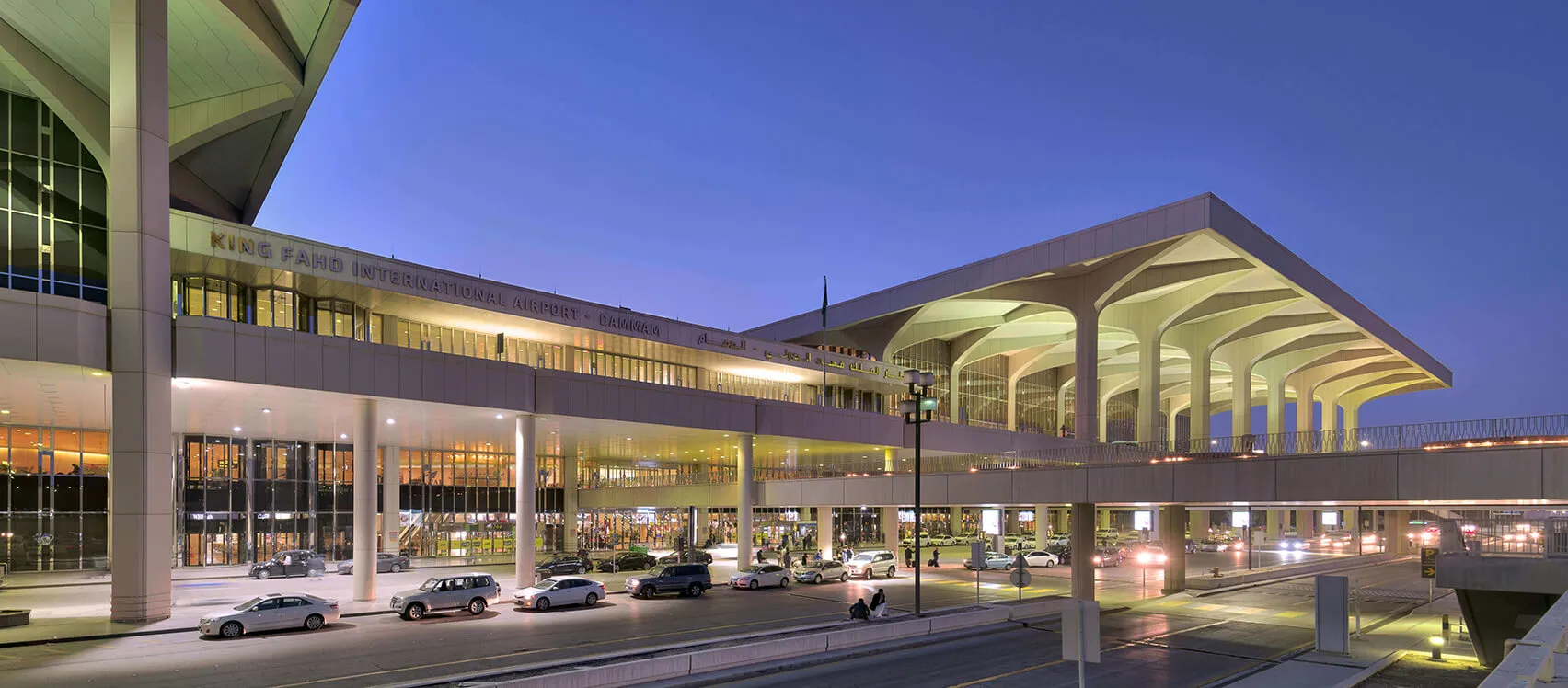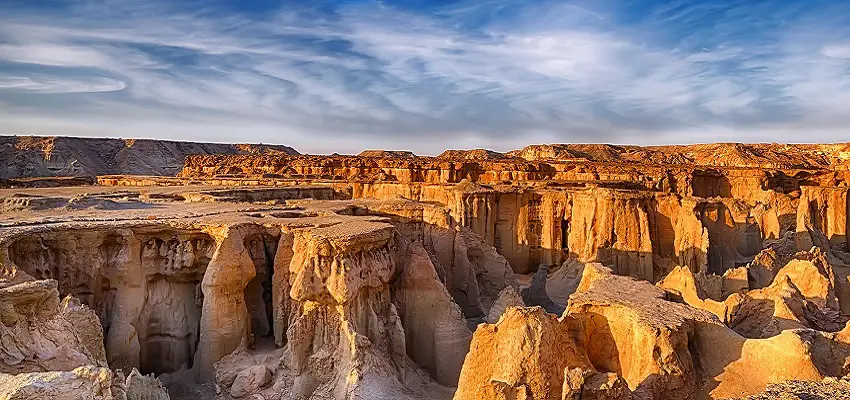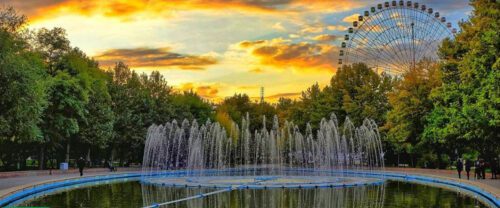Hamadan Attractions manifests a glimpse of the history and art of this destination. Hamedan is one of Iran’s cultural and historical cities, located in the western part of the country. The city is renowned as a significant tourist destination, known for its beautiful natural landscapes, rich ancient history, astonishing historical architecture, and vibrant local culture.
Situated amidst mountains and lush valleys, Hamedan has a moderate and cool climate. It is often referred to as the “City of a Hundred Gardens” due to its parks, gardens, and greenery, which attract a large number of visitors. Also, due to its beautiful and pleasant scenery, it attracts a large number of tourists towards itself.
Hamedan is famous for its local culture, customs, and traditions, providing travelers with the opportunity to acquaint themselves with these aspects during their journey. It stands as a remarkable destination for history enthusiasts, nature lovers, and those eager to experience local culture. To discover the tourist attractions in Hamedan, follow along with Sepehran blog.
Below, we mention some of the notable tourist spots in the city of Hamedan:
Sights to See in Hamedan:
- Alaviyan Dome
- Ganjnameh Waterfall
- Ali-Sadr Cave
- Hamedan Great Jame Mosque
- Cultural Heritage and Tourism Base of Hegmataneh
- Tomb of Abu Ali Sina
- Tomb of Baba Taher
- Ebn-e Salah-e Hamedani Observatory
Alaviyan Dome
This beautiful and historical dome is located in the city of Hamedan and is recognized as one of Iran’s exquisite historical buildings. The Islamic architecture of this structure is highly unique and remarkable. This monument is considered one of the architectural and stucco masterpieces of post-Islamic era in Hamedan, and it was registered as National Heritage No. 94 on October 15, 1310. Several members of the Alavi family are buried in the crypt of this building.
Gonbad-e Alavian (Alaviyan Dome) is a cultural and tourist attraction in the city of Hamedan, attracting the attention of tourists and literature enthusiasts. If you want to learn more about Iranian history and culture, we highly recommend not missing a visit to Alaviyan Dome during your trip to Hamedan.
Architecture of Alaviyan Dome
Alaviyan Dome was built in the late Seljuk period, in the 6th century. The brickwork and stucco work on this dome are exceptionally unique and outstanding, bearing a strong resemblance to the Gonbad-e-Sorkh of Maragheh. The stucco work is prominently visible throughout most parts of this structure, from its star-shaped dome to the intricate honeycomb patterns skillfully crafted by Iranian architects.
So, the intertwined flowers and shrubs and the stucco inscriptions with Kufic calligraphy bearing Quranic verses add to the beauty of this extraordinary building.
It’s worth mentioning that the interior dimensions of Gonbad-e Alavian bear a striking resemblance to the structure of Gonbad-e Heydarieh in Qazvin.
Visiting Alaviyan Dome Time and Cost
Visiting Hours: 09:00 AM to 05:00 PM
Admission Fee for Domestic Tourists: 40,000 Iranian Rials
Admission Fee for Foreign Tourists: 400,000 Iranian Rials
Address of Alaviyan Dome
Address: Hamedan Province, Hamedan City, Chahar Bagh Alavian, Near Imamzadeh Abdullah (View on Map)

Ganjnameh Waterfall
Ganjnameh Waterfall is nestled amidst the picturesque and pristine landscapes, making it an ideal destination for nature lovers and outdoor enthusiasts in Hamedan Province. It serves as a beautiful and serene natural spot for hiking and tourism, perfect for spending leisurely weekends and vacations. Ganjnameh Waterfall is located approximately 5 kilometers west of Hamedan, amidst the slopes of Mount Alvand.
This waterfall is typically at its fullest during the spring and summer seasons, following the melting of snow and rainfall, making it the best time to visit this extraordinary spectacle. The area surrounding the waterfall has stunning and captivating natural beauty. Lush forests, wild plants and flowers, and numerous clear springs enhance the natural charm of the location, offering excellent opportunities for nature exploration and enjoying scenic views.
The natural beauty of Ganjnameh Waterfall and its surrounding landscapes make it a suitable place for photography, providing tasteful and artistic photographers with a new and thrilling experience during their journey to this region.
Address of Ganjnameh Waterfall
Hamedan, 5 kilometers west of Hamedan, Ganjnameh Waterfall (View on Map)

Ali-Sadr Cave
Ali-Sadr Cave is one of the beautiful and fascinating natural attractions in the city of Hamedan. Located in the Alvand Mountains, not far from the center of Hamedan, this cave is a popular destination for visitors and tourists. It is one of the largest water caves in the world, and every year, numerous tourists from various parts of Iran and the world travel to this region to witness this astonishing cave.
History
Ali-Sadr Cave is an ancient natural cave with a history dating back thousands of years. It used to serve as a place for human habitation and activities in the past, and historical artifacts related to ancient humans have been found within it. The cave’s history goes back to the Jurassic period (190-136 million years ago) in terms of geology.
Geographical Location
Ali-Sadr Cave is situated in the northwestern part of Hamedan, in the “Sari Ghayeh” highlands, near the village of Ali-Sadr. Geographically, this location is surrounded by beautiful and mesmerizing landscapes and is nestled among the mountains.
Architecture
Ali-Sadr Cave boasts an intricate and challenging structure. Inside the cave, there are stalactites, sculptures, and peculiar shapes that allow visitors to enjoy the diverse and grandeur of the cave.
Visiting Experience
To visit Ali-Sadr Cave, it is advisable to wear appropriate clothing and bring a handheld flashlight. Visitors enter the cave accompanied by local guides who lead them through the internal pathways of the cave. The experience of visiting this cave allows you to delve deep into the history and nature of this region and enjoy the hidden beauties that lie beneath the earth’s surface.
Visiting Ali-Sadr Cave provides an extraordinary opportunity to experience the history, nature, and beauty of this part of Iran. This destination is highly appealing to travelers interested in tourism and natural and historical attractions.
Address of Ali-Sadr Cave
Hamedan, 75 kilometers northwest of Hamedan City, Kabudarahang County, Village of Ali-Sadr (View on Map)

Hamedan Great Jame Mosque
From ancient times, mosques have been considered safe and important places for all the people of Iran. Therefore, the construction of these buildings received the utmost attention and beauty.
The Grand Mosque of Hamedan, with its long history, beautiful architecture, and religious and historical significance, is one of the notable attractions in the city of Hamedan.
This mosque serves as a suitable place to become acquainted with the culture and history of the region and is recognized as a reputable tourist destination.
So, the Grand Mosque of Hamedan has a long history dating back to the early Islamic periods. However, there are no architectural remains from before the Qajar era. The current structure of the mosque dates back to the Qajar period and has undergone several renovations and restorations over the years, preserving its beauty to this day.
Architecture
The Grand Mosque of Hamedan is known for its beautiful architecture and captivating artistic elements. So, the main building is constructed from bricks, and the artistic designs on the walls and ceilings are clearly visible. The Islamic and Iranian architecture of this building has always added to its charm and wonder.
One of the architectural attractions of this mosque is the use of tile work in various parts. The mosque consists of several elements, including a portal, octagon, iwan (a vaulted hall), courtyard, minaret, and chambers.
Therefore, the different sections include the entrance portal, octagonal courtyard, iwan, prayer hall, minaret, and chambers. The mosque’s courtyard features a large pool that enhances its spiritual and historical ambiance.
Inside the mosque, there are marvelous artistic elements such as the dome, pulpit, squinches, prayer hall, and beautiful mosaics. These mosaics are adorned with attractive designs and colors.
An interesting note is that the courtyard is two meters lower than the adjacent streets.
Visiting
The Grand Mosque of Hamedan is usually open to visitors and tourists throughout the day. If you’re traveling to Hamedan, make sure to include a visit to this historical site in your itinerary.
Address
Downtown Hamadan, at the beginning of Ekbatan Street, near Imam Khomeini Square (View on Map)

Cultural Heritage and Tourism Base of Hegmataneh
Hegmataneh is another historical and fascinating site in Hamedan, with its history dating back to the time of the Medes. In fact, this place is considered the first governmental center in Iran. Over time, Hegmataneh served as the summer capital during the reigns of the Achaemenids, Parthians, and Sassanians. Today, it is used as a tourist and cultural attraction. Inside Hegmataneh, you can explore various museums focused on the history and culture of the Hamadan region. This site is also frequently used for exhibitions, conferences, and cultural events.
Architecture
Hegmataneh building is beautifully designed and features columns and exquisite decorations. It is constructed using bricks and adorned with colorful tiles. Thick walls and windows with intricate designs characterize the structure. Wooden ceilings and mesmerizing mirror works can be seen inside the building. In essence, Hegmataneh is like a vast palace with seven interconnected fortresses, each painted in different colors and serving different purposes. For example, the seventh fortress was designated as the king’s palace.
With all these details, the architectural beauty of Hegmataneh cannot be adequately described, and the intricate decorations on doors, arches, and columns speak of its remarkable and unique architecture.
Visiting
Hegmataneh is open to visitors throughout the day, offering tourists the chance to enjoy its beauty. In many cases, exhibitions and cultural events are held inside Hegmataneh, adding to the variety and appeal of this site.
Therefore, a visit to Hegmataneh can be a fascinating cultural and historical experience, allowing you to become acquainted with the history and culture of Hamadan.
Address
Hamadan City, at the end of Ekbatan Street, Ekbatan Square, Hegmataneh Cultural and Tourist Heritage Base (View on Map)

Tomb of Abu Ali Sina
Tomb of Abu Ali Sina is one of the significant symbols of Hamedan city. Abu Ali Sina, also known as Sheikh al-Ra’is, was one of the greatest scholars and physicians in the history of Islam, contributing extensively to the fields of medicine, philosophy, and other sciences.
Today, this site is one of the important attractions in Hamedan. Tourists can visit the museum inside the mausoleum to learn about the life and works of Abu Ali Sina, gaining insights into the field of medicine. The museum houses a collection of artifacts and objects related to Avicenna and his era, including books, manuscripts, and historical items.
Additionally, visitors can enjoy the beautiful architecture, gardens, and green spaces surrounding the tomb.
A visit to the Tomb of Abu Ali Sina provides an excellent opportunity to become acquainted with the life and works of one of the greatest scholars in the history of Islam and to appreciate the unique architecture and history of this site.
Architecture
The Tomb of Abu Ali Sina is known for its Iranian Islamic architectural style with distinct features such as beautiful tilework, artistic motifs, and beautiful stone inscriptions.
The mausoleum has 12 columns and a towering dome, which is recognized as a symbol of Hamedan. Therefore, the architecture of this building combines elements of Islamic architecture with ancient and post-Islamic Iran.
So, the exterior facade of the structure is adorned with beautiful tilework featuring various artistic patterns. Floral motifs and decorative bands are among the well-known decorations in Islamic architecture.
Inside the mausoleum, stone inscriptions with inscriptions in both Arabic and Persian languages can be found. Additionally, the tilework and artistic designs give a special charm to this architecture.
The Tomb of Abu Ali Sina is surrounded by beautiful and extensive gardens, courtyards, fountains, and traditional pools adorned with various trees and flowers.
Address
Hamadan Province, Hamadan City, Avicenna Square (View on Map)

Tomb of Baba Taher
It’s hard to find someone who isn’t familiar with Baba Taher, especially if they are lovers of poetry and literature. Baba Taher was a great Iranian poet and mystic who lived in the 4th and 5th centuries and is known for his famous couplets.
The turquoise Baba Taher Mausoleum, surrounded by a lush and tree-covered area, has turned this structure into one of the most attractive tourist destinations. The inner walls of this building are adorned with delightful verses, creating a mystical atmosphere.
Architecture
The architecture of Baba Taher’s mausoleum belongs to the 7th and 8th-century architectural style. The turquoise dome and conical roof, along with intricate tilework on the ceiling, have created an extraordinary and stunning building. So, the tall walls with unique patterns reflect the special creativity of the architect and builder, symbolizing the concept of ascension to the cosmos. The white stone used in the exterior facade of the building attracts every tourist towards it.
Address:
Hamedan Province, Hamedan City, Baba Taher Square (View on Map)

Ebn-e Salah-e Hamedani Observatory
The experience of traveling to the skies, wherever it may be, is an unparalleled journey. Exploring the celestial realm, journeying into the past, and creating unforgettable memories.
If your path leads you to the beautiful city of Hamedan and you are a lover of astronomy and stargazing, do not miss a visit to the Ebn-e Salah-e Hamedani Observatory. This facility is equipped with all the electronic equipment, both fixed and mobile telescopes, that allow you to enjoy stargazing on the expanse of the night sky from the heights of Haji Enayat Hill. The history of this observatory dates back to the year 1382 (Solar Hijri), and it has been operated by the Hamadan Municipality.
Address
Hamadan, Haji Enayat Hill, Ebn-e Salah-e Hamedani Observatory (View on Map)

Conclusion
As you know, Hamadan is a historically rich city with a vibrant culture and numerous tourist attractions. This city hosts both domestic and international tourists annually. Due to its moderate and cold climate, it is advisable to avoid traveling to this city during the cold seasons. Spring and summer are the best times to visit this beautiful and pleasant city.










